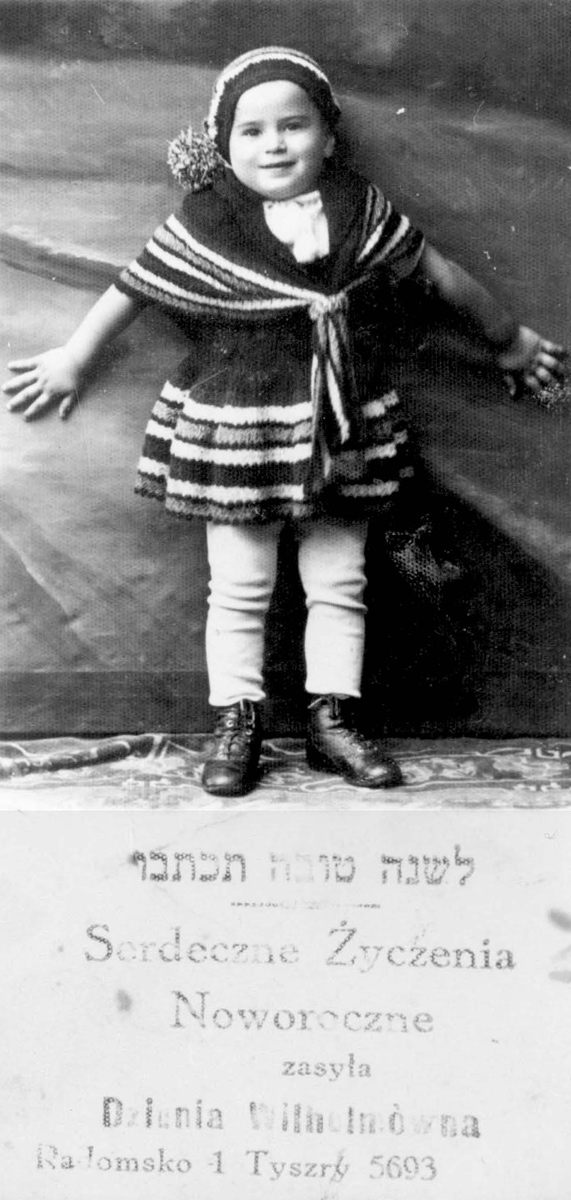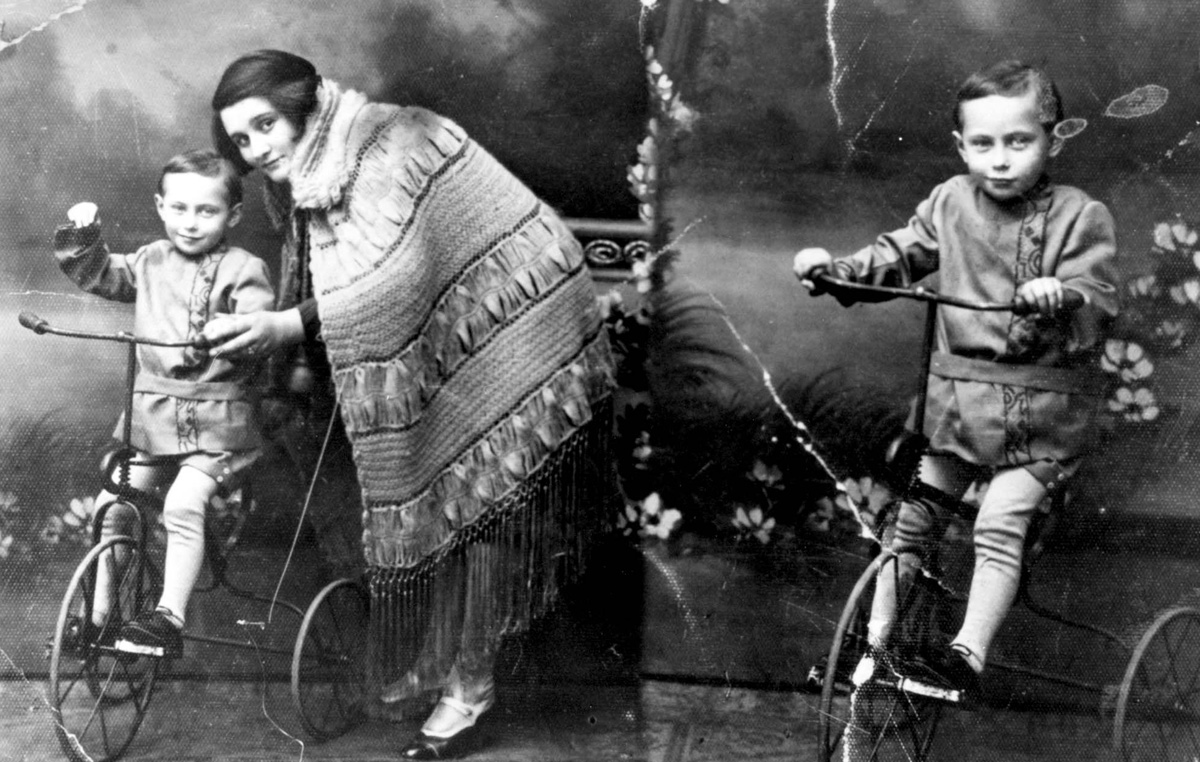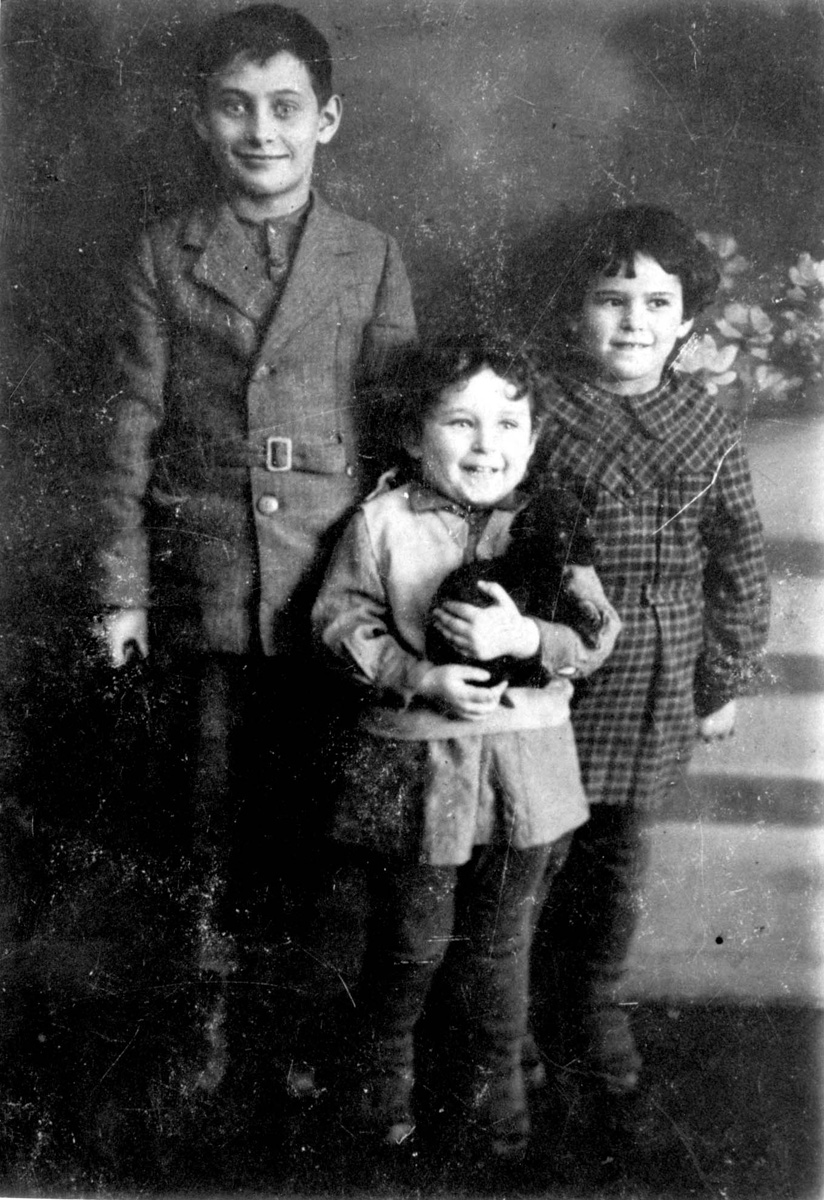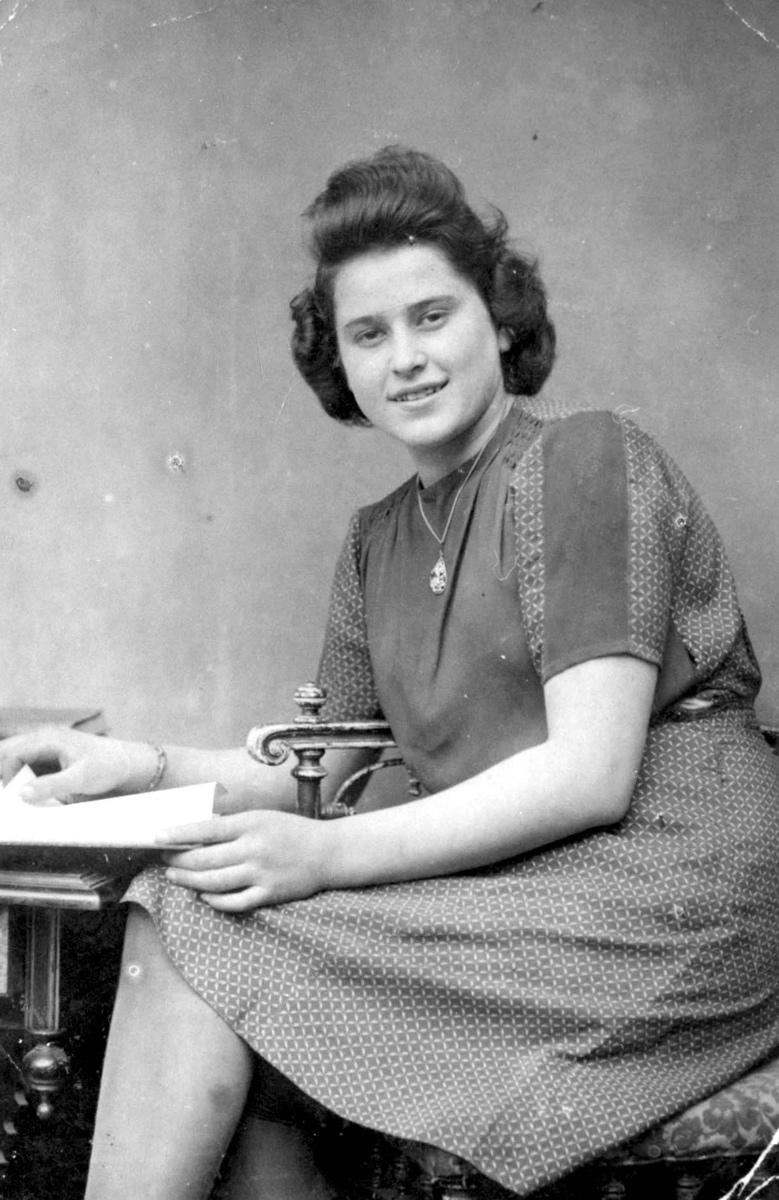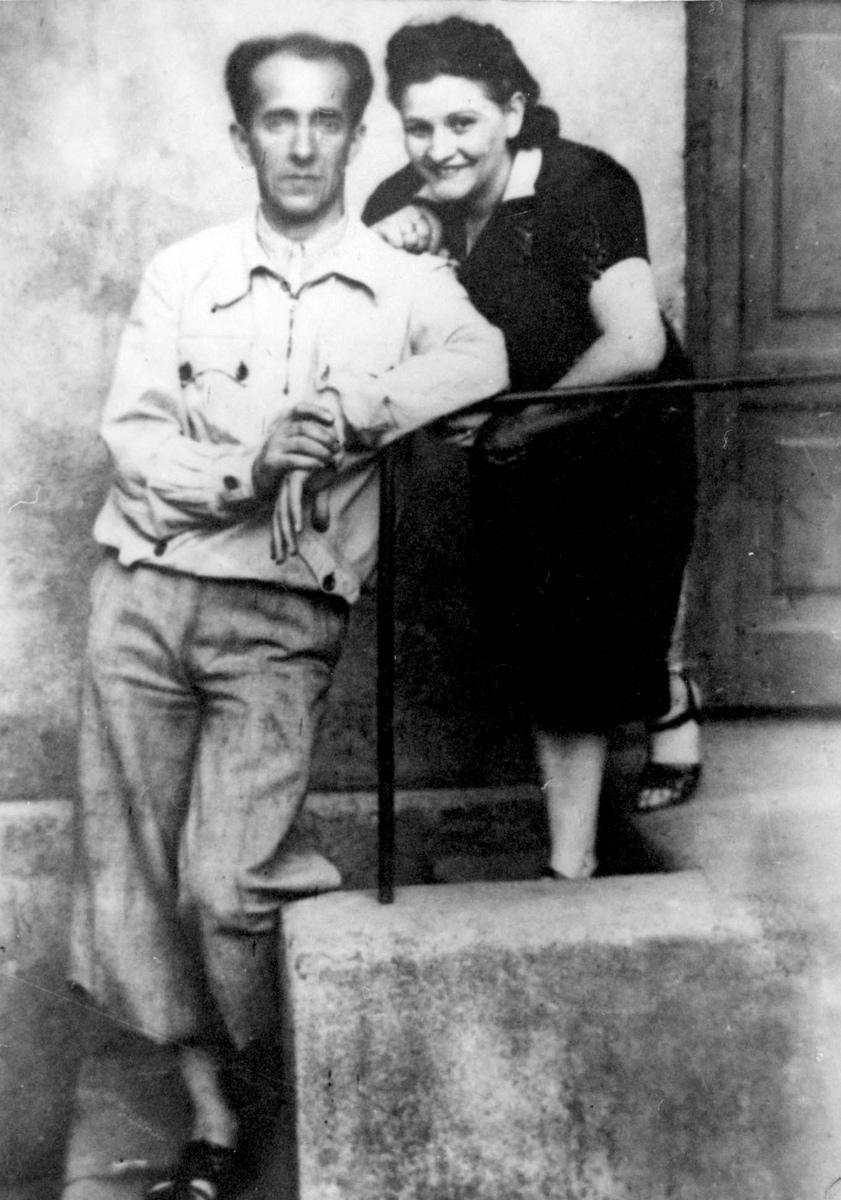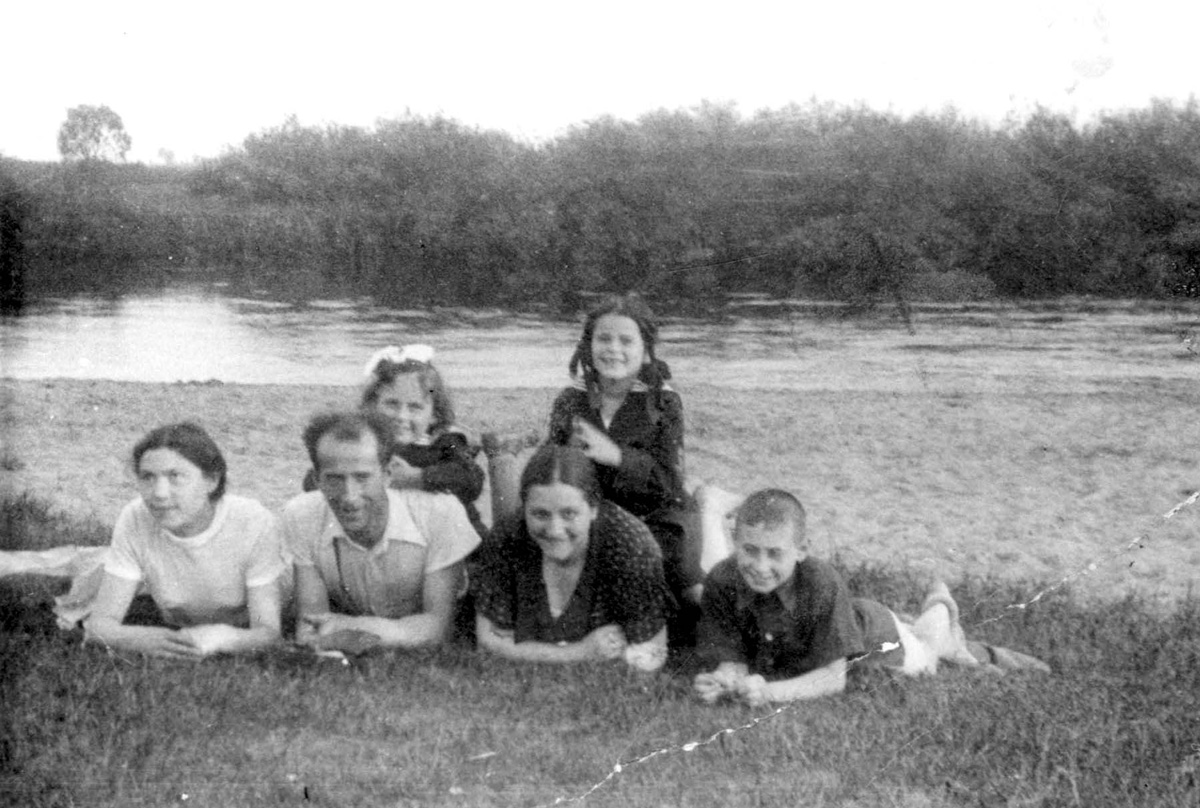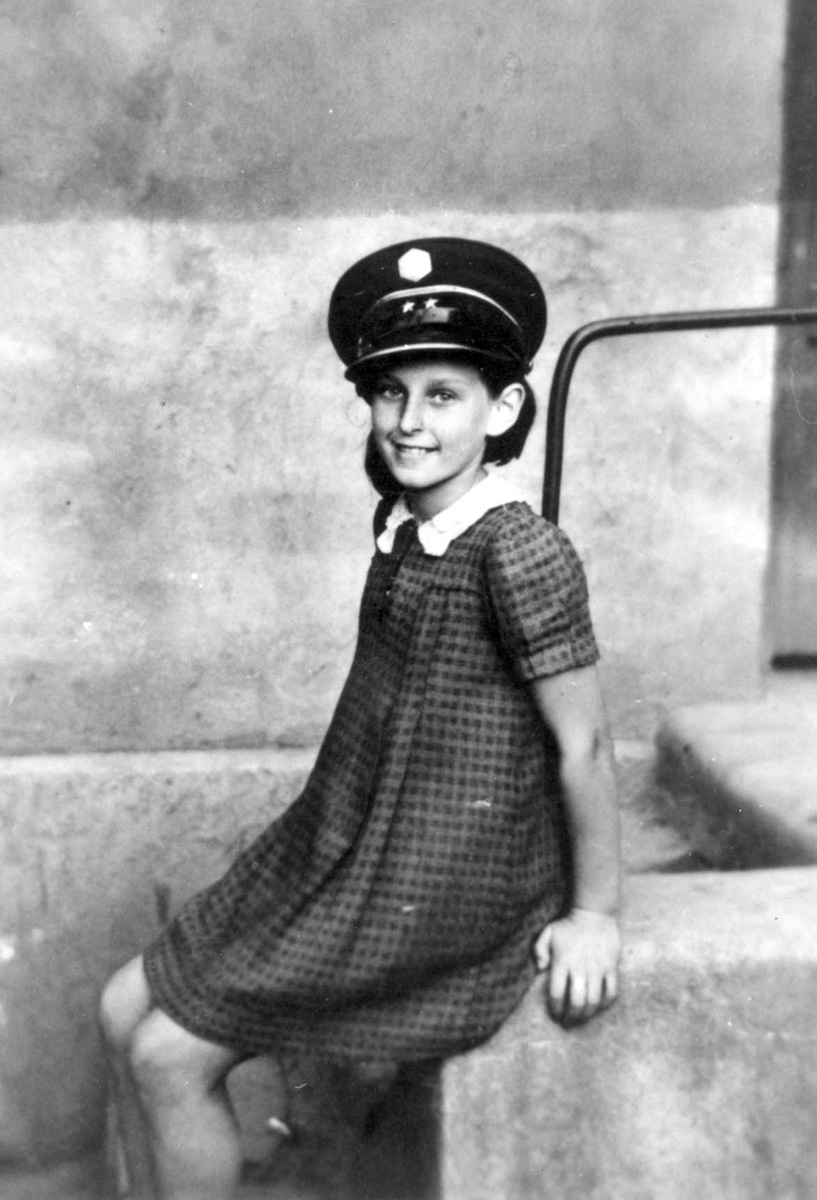New Year's card with a portrait of toddler Dziunia Wilhelm sent from Radomsko, Poland to Eretz Israel in 1932
Zelig Wilhelm, his wife Gucia-Gitel née Krause and their three children, Menachem-Moniek (b. 1926), Dziunia (b. 1930) and Esther-Ethel (b. 1932), lived in Radomsko, Poland, surrounded by their extended families. Zelig was a talented film and stills photographer, who made Polish films and cinema newsreels. He had a studio called "Venus Photo", and a state-of-the-art photography laboratory on the second floor of their home. Gucia helped him in the studio.
The Wilhelm family fled bombarded Radomsko in early September 1939, hoping to reach Warsaw, but the rapid advance of the German Army through Poland forced them to retrace their steps. They returned home to find it ransacked. The studio and laboratory had been destroyed, and all the equipment stolen. On 3 September, the Germans occupied Radomsko, and the city's Jews were subjected to humiliation, abuse and forced labor conscription. Zelig was allowed to continue working in his field. In December, the Wilhelm family was confined in a ghetto together with all the Jews of Radomsko. Zelig had a studio within the ghetto, and carried on working as a photographer – the clients were now Germans, and from time to time, Zelig was ordered by the Gestapo to document factories, jails and prisoners. Dziunia accompanied her father on these occasions, and helped him with the equipment.
On 9 October 1942, an Aktion took place in the Radomsko ghetto, in the course of which thousands of Jews were sent to the Treblinka extermination camp, including many of Zelig and Gucia's relatives. Their children, Menachem, Dziunia and Esther hid in the attic, and all five survived the Aktion. A second Aktion took place a few days later, and Gucia was caught and deported to her death in Treblinka. Zelig and the children remained in the ghetto. In late November, Menachem left the ghetto to bring coal, was caught on his return and shot to death. Zelig organized Christan birth certificates for his daughters, in the names of Jadwiga and Regina Kozierowska, and smuggled them out of the ghetto. Esther found refuge with a Polish family that agreed to take one child in. Dziunia made her way to Czestochowa, and was later joined there by Esther. The two girls stayed with different families, but a neighbor who suspected Esther of being Jewish reported her to the police. Ten-year-old Esther and the Polish woman hiding her were both arrested and interrogated. Esther managed to persuade her interrogator that she was Polish, and the two were released. In order to protect her rescuer, Esther was transferred to a convent outside the city, but her Jewish identity was discovered. She returned to the Polish woman's house, and from there, a Polish friend of Zelig's took her to Warsaw. There, Esther was reunited with her father, who was living under an assumed identity as Zenek Kampa, and working as a photographer's assistant. Dziunia volunteered to work for the Germans, and was sent to work on a farm in the suburbs of Vienna. A few months later, Dziunia managed to bring Esther to Vienna, where she worked on an adjacent farm. The sisters did not meet often, for fear of exposing their Jewish identity. Zelig took part in the Polish Uprising in Warsaw, and survived.
In April 1945, Dziunia and Esther were liberated by the Red Army and embarked on the return journey to Radomsko, where they found Zelig. After a few weeks in Radomsko, Polish rabble-rousers threatened Zelig and his family, and they left Radomsko. They reached Berlin, and then the DP camp at Bergen-Belsen. Dziunia immigrated to Eretz Israel (Mandatory Palestine) in 1947, married, and became Chana Ash. Esther immigrated a year later, and Zelig followed in 1950.

